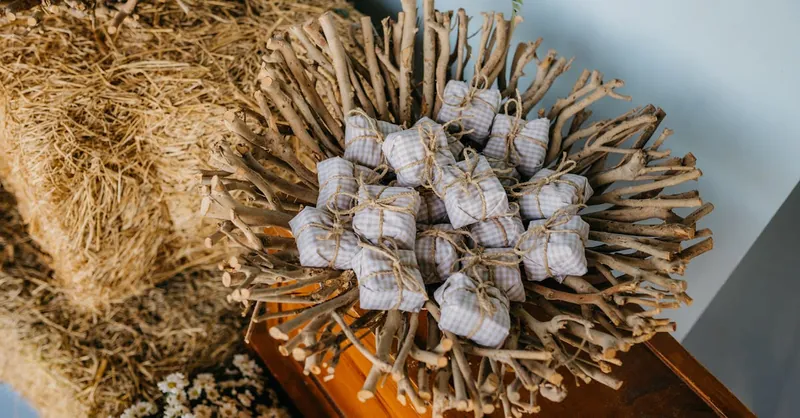Make Money Selling Handmade Crafts: Creative Side Hustle Ideas
Category: Side Hustles
Unlock Your Potential: Make Money Selling Handmade Crafts
If you’ve landed here, chances are you’re an ambitious individual eager to turn your creativity into cash but need a flexible way to do it on your own schedule. Maybe you’re new to selling handmade crafts or you’ve tried before but struggled to find consistent income or the right marketplace. You want side hustle ideas that not only fit your creative passions but also help you build a sustainable revenue stream without compromising your main commitments.
This post breaks down actionable, practical steps to successfully make money selling handmade crafts, covering everything from product ideas and pricing strategies to choosing the best online platforms and marketing tactics aimed specifically at busy creators like you. Unlike generic guides, we focus on side hustle feasibility and creative freedom, showing you how to turn your handmade projects into a rewarding money-making venture tailored to your lifestyle.
Keep reading to discover insider tips, marketplace insights, and proven strategies that empower you to start earning extra income—whether you’re an experienced crafter or just starting out. By the end, you’ll have a clear roadmap to begin your creative side hustle with confidence and clarity.
- Unlock Your Potential: Make Money Selling Handmade Crafts
- Identifying Profitable Handmade Crafts
- Understanding Your Target Market
- Crafting Quality Products Efficiently
- Pricing Your Handmade Crafts for Profit
- Choosing the Best Sales Channels for Your Handmade Crafts
- Effective Marketing Strategies for Handmade Sellers
- Managing Orders, Shipping, and Customer Service for Handmade Crafts
- Scaling Your Handmade Craft Business
- Handling Legalities and Finances: Setting Up for Long-Term Success
- Staying Inspired and Avoiding Burnout: Strategies to Maintain Creativity and Motivation
Identifying Profitable Handmade Crafts
Choosing the right products to create and sell is vital for building a successful handmade craft side hustle. To maximize your earnings and attract steady customers, focus on profitable craft niches that combine current trends with timeless appeal. Some of the best-selling categories include:
- Jewelry – From minimalist necklaces to bold statement pieces, handmade jewelry is consistently popular due to its personal and wearable nature. Customizable options like name bracelets or birthstone rings add strong appeal for gift buyers.
- Home Décor – Unique, handcrafted home accents such as candles, wall art, pottery, and decorative pillows resonate well with customers looking to personalize their living spaces. Seasonal items can also boost sales year-round.
- Personalized Gifts – Customization is a fast-growing market. Products like engraved cutting boards, monogrammed totes, and bespoke stationery create emotional value that encourages repeat purchases and premium pricing.
- Eco-Friendly Items – With increasing consumer awareness around sustainability, eco-conscious crafts such as reusable beeswax wraps, upcycled bags, or natural skincare items are both popular and socially impactful.
By targeting these evergreen and trending craft products, you’ll tap into established demand while allowing room to showcase your creativity. Remember to validate your ideas by researching online marketplaces like Etsy, Pinterest trends, and social media hashtags to see what’s resonating with buyers. Focusing on in-demand, high-quality handmade crafts will position your side hustle for consistent profits and growth.

Image courtesy of Jonathan Borba
Understanding Your Target Market
One of the most crucial steps to make money selling handmade crafts is to deeply understand your target market. Knowing who your ideal customers are allows you to tailor your products, pricing, and marketing messages—making your crafts highly appealing and boosting your chances of consistent sales. Start by defining your target audience with key factors such as:
- Demographics – Age, gender, income level, education, and location. For example, trendy minimalist jewelry might attract young urban professionals, while eco-friendly reusable products may appeal more to environmentally conscious consumers.
- Psychographics – Interests, values, hobbies, and purchasing motivations. This helps you connect emotionally with customers and create crafts that reflect their lifestyles and personal tastes.
- Buying Behavior – How often they buy handmade products, their preferred shopping platforms (Etsy, Instagram, local markets), and price sensitivity.
Next, conduct thorough market research to validate your assumptions and identify gaps or emerging trends. Use tools like Google Trends, Etsy search analytics, and social media hashtags to discover what your ideal customers are searching for and engaging with. Additionally, browse customer reviews and forums in your craft niche to learn directly from buyers about their needs, preferences, and pain points.
By combining demographic data with real customer insights, you’ll be able to design and market your handmade crafts with precision, increasing your shop’s visibility and conversion rates. Tailoring every aspect of your side hustle—from product selection to branding—to your target audience ultimately leads to stronger customer loyalty and higher profits on your own flexible schedule.

Image courtesy of William Chen
Crafting Quality Products Efficiently
Creating high-quality handmade crafts that consistently impress your customers is essential for building a successful side hustle. However, balancing craftsmanship with efficient production and affordable sourcing can be challenging. To optimize your workflow and maintain the quality your buyers expect, keep the following key strategies in mind:
Affordable and Reliable Material Sourcing
- Buy in Bulk from Trusted Suppliers – Purchasing craft materials like fabric, beads, or wood in larger quantities reduces the cost per unit and ensures you have enough stock to meet demand. Look for wholesale craft suppliers or local outlet stores to find competitive prices.
- Scout for Discounts and Sales – Sign up for newsletters from craft retailers or join crafting communities online to stay updated on promotions, coupon codes, and clearance sales.
- Utilize Upcycled or Reclaimed Materials – Incorporating eco-friendly, upcycled elements not only lowers material costs but also appeals to environmentally conscious consumers, adding a unique story to your products.
Balancing Quality and Production Speed
- Streamline Your Crafting Process by establishing a well-organized workspace with all essential tools and materials within easy reach.
- Batch Tasks such as cutting, assembling, or painting to reduce repetitive setup time and increase efficiency.
- Invest in Quality Tools and Equipment that save time and improve precision, enabling you to produce professional-grade crafts faster.
Maintaining Consistency Across Handmade Items
Reliable quality builds customer trust and encourages repeat business. To maintain consistency:
- Develop detailed step-by-step instructions or templates for each product.
- Conduct quality checks at key milestones during production to catch issues early.
- Keep a production log to track materials used, time spent, and any variations—helping you standardize outputs and pricing.
By sourcing materials smartly, optimizing your workflow, and rigorously ensuring quality, you’ll create beautiful handmade crafts efficiently. This approach not only maximizes your profits but also strengthens your brand reputation, making your side hustle a dependable source of income that fits your creative lifestyle perfectly.

Image courtesy of Anna Shvets
Pricing Your Handmade Crafts for Profit
Setting the right price for your handmade crafts is a crucial step to ensure your side hustle is not only enjoyable but also financially rewarding. Pricing too low can undervalue your time and materials, while pricing too high risks alienating potential customers. To strike the perfect balance, your pricing strategy should reflect your time, skill level, raw material costs, and marketplace standards while remaining competitive and attractive to buyers.
Key Factors to Consider When Pricing
-
Calculate Material Costs Accurately
Start by tallying the total cost of all materials used for each item, including packaging if applicable. Don’t forget to factor in shipping supplies and any tools that wear out over time. -
Value Your Time and Skill
Estimate how long it takes to create one piece and decide on a fair hourly wage that reflects your crafting expertise. For example, if you spend two hours on a product and want to earn $20 per hour, add $40 to your base cost. -
Account for Overhead and Fees
Include additional expenses like studio rent, electricity, online marketplace fees (Etsy, Shopify), payment processing charges, and marketing costs. These overheads should be proportionally distributed among your products. -
Research Market Pricing
Analyze similar handmade products in your niche and platform to understand prevailing price points. This step ensures your prices are competitive and aligned with customer expectations. -
Consider Perceived Value and Brand Positioning
Premium pricing can work if your crafts offer exceptional quality, uniqueness, or customization. Building a strong brand narrative and attention-grabbing packaging enhances perceived value, allowing for higher price points.
Pricing Formulas to Try
- Cost-Plus Pricing: Add a fixed percentage markup (usually 2-3 times your total cost) to cover labor and profit.
- Hourly Rate Pricing: (Hours spent x hourly wage) + material costs + overhead.
- Competitor-Based Pricing: Set prices based on similar items in the marketplace, adjusting for your unique value.
Tips to Stay Competitive Yet Profitable
- Avoid Undercutting: Pricing too low can signal poor quality or make it difficult to scale your business.
- Offer Tiered Pricing: Provide basic, mid-level, and premium options to cater to different customer budgets.
- Use Bundling: Sell sets or collections at a slight discount to increase average order value.
- Review Prices Regularly: Adjust prices as your skills improve, costs fluctuate, or demand changes.
By carefully setting prices that reflect your true costs and creative worth while staying mindful of market dynamics, you position your handmade craft business for sustainable profit and growth. Mastering pricing empowers you to confidently attract customers and maximize your earnings on your own schedule.

Image courtesy of HONG SON
Choosing the Best Sales Channels for Your Handmade Crafts
Selecting the right sales channels is a decisive factor in turning your handmade crafts into a profitable side hustle. With numerous platforms available, each offers unique advantages depending on your target market, product type, and business goals. To help you navigate this crucial step, let's compare some of the most popular online marketplaces and local selling options to find the ideal fit for your creative side hustle.
Etsy: The Handmade Marketplace Leader
Etsy is the go-to platform for handmade, vintage, and unique goods, making it an excellent choice for crafters starting out or looking to grow organically. Its large, engaged community actively seeks personalized and unique handmade items, providing high visibility to sellers without massive upfront costs. Key benefits include:
- User-friendly setup and low listing fees.
- Integrated payment and shipping options.
- Built-in customer trust for handmade products.
- Ample tools for SEO optimization and marketing within the platform.
However, Etsy charges transaction and payment processing fees, and competition is intense, so standing out requires strong branding and consistent quality.
Amazon Handmade: Scale and Exposure
For crafters ready to scale and tap into immense traffic, Amazon Handmade offers significant benefits. It provides access to Amazon’s global customer base and reliable fulfillment options like FBA (Fulfillment by Amazon). It suits sellers with efficient production systems and standardized products prepared for larger volumes.
- No listing fees but a higher referral fee percentage compared to Etsy.
- Access to Amazon Prime customers adds credibility.
- Stringent application and approval processes ensure product authenticity.
If you prioritize mass reach and have capacity to fulfill substantial orders, Amazon Handmade is an excellent growth-oriented sales channel.
Shopify: Your Own Online Storefront
For ultimate control over your brand and customer experience, creating a Shopify store offers unrivaled freedom. Unlike marketplaces, Shopify lets you customize your website design, control pricing and promotions, and collect detailed customer data.
- Monthly subscription fees plus payment gateway charges apply.
- Requires proactive marketing, SEO, and traffic-generation efforts.
- Integrates seamlessly with social media, email marketing, and other sales channels.
Shopify is ideal for sellers focused on long-term brand building, recurring customers, and expanding beyond marketplaces.
Local Craft Fairs and Markets: Personal Connection and Community
Selling at local craft fairs, markets, and pop-up shops complements online sales by providing direct interaction with customers. This approach builds local brand recognition, allows immediate feedback, and can generate impulse sales with minimal fees.
- Great for testing new products in real time.
- Requires investment in booth setup and event participation.
- Ideal for sellers who enjoy personal selling and community engagement.
What’s the Best Fit for You?
Consider these questions to choose your best sales channel:
-
Do you want to start with minimal upfront investment and tap into existing traffic?
→ Etsy is your best bet. -
Are you ready to scale and handle large order volumes with fulfillment support?
→ Amazon Handmade fits well. -
Do you want full brand control and direct customer relationships?
→ Launch a Shopify store. -
Are you seeking local exposure and personal sales connections?
→ Participate in craft fairs or markets.
Often, combining multiple channels creates a diversified sales strategy that reduces risk and maximizes income on your own schedule. Starting with Etsy or local markets and gradually expanding to Shopify or Amazon can create a strong foundation for sustainable growth in your handmade craft side hustle.

Image courtesy of Yazid N
Effective Marketing Strategies for Handmade Sellers
To build a loyal customer base and significantly boost the visibility of your handmade crafts, effective marketing is indispensable. Leveraging a combination of social media, SEO, email marketing, and storytelling can transform your side hustle from a modest venture into a thriving creative business, all while maintaining your flexible schedule.
Leverage Social Media to Showcase and Engage
Platforms like Instagram, Pinterest, and Facebook are powerful visual tools ideally suited for handmade sellers. Use them to:
- Share high-quality photos and videos of your products, behind-the-scenes processes, and customer testimonials to build trust and excitement.
- Engage consistently with your followers by responding to comments, participating in relevant groups, and utilizing interactive features like stories, polls, or live streams.
- Collaborate with influencers or crafting communities to expand reach and tap into targeted audiences who appreciate handmade goods.
Optimize for SEO to Attract Organic Traffic
Search engine optimization (SEO) is crucial whether you sell on Etsy, Shopify, or your own website. Focus on:
- Researching relevant keywords that your target customers use (e.g., "custom handmade jewelry," "eco-friendly crafts").
- Incorporating these keywords naturally into your product titles, descriptions, tags, and blog content.
- Writing compelling, keyword-rich product descriptions that address customer needs and highlight unique features.
- Creating a blog or resource section with tutorials, crafting tips, or gift guides to drive additional organic traffic and boost your authority in the handmade niche.
Harness the Power of Email Marketing
Building an email list allows you to nurture relationships and encourage repeat purchases. To get started:
- Offer incentives like discounts, free shipping, or exclusive content in exchange for email sign-ups.
- Send regular newsletters featuring new product launches, behind-the-scenes stories, and personalized offers.
- Segment your list based on customer behavior and preferences to deliver highly targeted messages that convert.
Use Storytelling to Connect Emotionally
Storytelling is a uniquely powerful marketing tool for handmade sellers. Sharing your creative journey, the inspiration behind each piece, or the sustainable methods you employ creates an emotional bond that turns casual buyers into passionate brand advocates. Incorporate stories into your:
- Product descriptions
- About page on your website
- Social media captions and videos
- Email campaigns
By combining social media engagement, SEO best practices, targeted email marketing, and authentic storytelling, you establish a memorable, trustworthy brand that attracts and retains customers eager to support your handmade craft business. This integrated marketing approach maximizes your side hustle’s earning potential and fits perfectly within your busy lifestyle.

Image courtesy of RDNE Stock project
Managing Orders, Shipping, and Customer Service for Handmade Crafts
To build a thriving handmade craft side hustle, efficiently managing orders, shipping, and customer service is just as essential as creating beautiful products. Smooth operations and timely delivery not only enhance customer satisfaction but also foster repeat business and positive reviews, boosting your shop’s visibility and credibility.
Best Practices for Order Management and Timely Shipping
-
Organize Incoming Orders Systematically
Use spreadsheets or order management tools integrated with your sales platform to keep track of order details, shipping status, and customer notes. Staying organized helps prevent mistakes and ensures prompt processing. -
Set Realistic Processing and Shipping Times
Clearly communicate how long it takes you to prepare an order and expected delivery times in your product listings and shop policies. Managing expectations upfront reduces customer inquiries and boosts trust. -
Choose Reliable Shipping Services
Partner with dependable carriers offering tracking options and affordable rates. Consider flat-rate or free shipping if feasible to increase buyer appeal, but always calculate the impact on your margins. -
Prepare Professional Packaging
Invest in quality, branded packaging that protects your crafts while providing a delightful unboxing experience. Include care instructions, thank-you notes, and business cards to create a personal connection.
Handling Customer Service to Build Loyalty and Encourage Repeat Sales
-
Respond Promptly and Courteously to all customer inquiries, complaints, or requests for customization. Quick, empathetic communication shows you value your buyers and often diffuses potential issues.
-
Request Feedback and Reviews after delivery to demonstrate engagement and collect valuable testimonials that influence future customers.
-
Implement a Clear Return and Exchange Policy to protect your business while reassuring buyers about their purchase security.
-
Use Customer Relationship Management (CRM) Tools or simple databases to keep notes on repeat customers’ preferences, enabling personalized offers or product recommendations.
By mastering order management, dependable shipping, and exceptional customer service, you create a seamless buying experience that encourages customers to come back and recommend your handmade crafts to others. This seamless operational approach is critical to growing a profitable side hustle that fits your schedule and enhances your creative brand.

Image courtesy of RDNE Stock project
Scaling Your Handmade Craft Business
Once you’ve established a steady flow of sales and gained confidence in your production and marketing processes, it’s time to think bigger. Scaling your handmade craft business involves expanding beyond the side hustle stage to create a sustainable full-time income, all while maintaining the creative freedom and flexible schedule you value.
Expanding Product Lines
A key growth strategy is to diversify your product offerings. Introducing new items related to your best sellers not only attracts broader customer segments but also increases repeat purchases. Consider:
- Adding complementary products that fit your brand aesthetic (e.g., if you sell jewelry, introduce matching accessories like pouches or care kits).
- Offering seasonal or limited-edition collections to spark urgency and fresh interest.
- Experimenting with variations in materials, colors, or personalization options to appeal to wider tastes.
Expanding smartly means leveraging what you already know works while tapping new markets to grow your revenue streams steadily.
Outsourcing Production
As order volume increases, outsourcing parts of production can save time and prevent burnout. Trusted helpers enable you to focus on design, marketing, and customer relationships. Outsourcing options include:
- Hiring local artisans or freelancers to assist with assembly or finishing touches.
- Partnering with small manufacturers for bulk production of popular items.
- Using print-on-demand or dropshipping services for specific product categories that suit your style.
To maintain quality and brand consistency, establish clear guidelines, sample approvals, and regular communication with any production partners.
Collaborations and Partnerships
Collaborating with other creatives or businesses can open new audiences and inspire innovation. Ideas include:
- Co-creating limited collections with fellow artisans or influencers.
- Partnering with local boutiques to stock your products.
- Joining craft collectives or subscription boxes to showcase your work alongside complementary brands.
Effective collaborations increase exposure, build credibility, and can lead to new revenue opportunities without the full cost of solo expansion.
By thoughtfully expanding product lines, outsourcing production, and forging strategic collaborations, you transform your handmade craft side hustle into a scalable, profitable business. This growth approach preserves your flexibility and creativity while optimizing your income potential—perfectly aligned with your goal of making more money on your own schedule.

Image courtesy of Tima Miroshnichenko
Handling Legalities and Finances: Setting Up for Long-Term Success
Navigating the legal and financial aspects of your handmade craft business is crucial to building a sustainable and compliant side hustle. Understanding your obligations regarding taxes, permits, and copyrights not only protects you from potential legal issues but also lays a strong foundation for growth and financial health.
Taxes and Permits for Handmade Crafts
- Register Your Business: Depending on your location and scale, you may need to register your side hustle as a sole proprietorship, LLC, or other entity. This step can impact your liability, taxes, and ability to open a business bank account.
- Obtain Necessary Permits and Licenses: Check local and state requirements for selling handmade goods, including sales tax permits, home occupation permits (if working from home), and any health or safety certifications related to materials or products.
- Understand Sales Tax Obligations: Many jurisdictions require you to collect sales tax on physical goods sold within the state—even online. Familiarize yourself with your local tax laws and use automated tools or marketplace features to apply the correct rates.
- Track Income and Deductible Expenses: Maintain detailed records of all sales, costs of materials, shipping expenses, marketing fees, and business-related purchases. Proper documentation helps you accurately report income and take advantage of allowable deductions during tax season, reducing your overall liability.
Copyright and Intellectual Property Protection
- Protect Your Original Designs: Handmade crafts often involve unique patterns, logos, or artwork. Consider copyrighting your designs or trademarking your brand name and logo to prevent unauthorized copying.
- Respect Others’ Intellectual Property: Avoid using copyrighted images, patterns, or materials without permission to prevent legal issues and maintain your shop’s credibility.
- Use Licensing Agreements if Collaborating: Should you collaborate with other artists or use third-party content, clearly establish rights and usage terms in writing.
Keeping Your Financials Organized
Adopting efficient financial management practices ensures you stay on top of your business’s health and frees up time for creativity:
- Separate Business and Personal Finances: Open a dedicated business bank account and payment processor to simplify tracking income and expenses.
- Utilize Accounting Software: Tools like QuickBooks, Wave, or specialized small business apps automate invoicing, expense categorization, and generate financial reports that reveal profit margins and cash flow.
- Schedule Regular Financial Reviews: Monthly audits of sales, costs, and tax obligations help you adjust pricing, manage inventory purchases, and prepare for quarterly or annual tax filings.
- Plan for Taxes and Savings: Set aside a percentage of your income regularly to cover taxes and reinvest in your craft business, ensuring long-term stability.
By proactively managing tax compliance, legal protections, and organized financial records, you establish a professional, trustworthy handmade craft business that can thrive without stress. Taking these essential steps enables you to focus on what you love—creating beautiful crafts—while confidently growing your lucrative side hustle on your own schedule.

Image courtesy of Kampus Production
Staying Inspired and Avoiding Burnout: Strategies to Maintain Creativity and Motivation
Balancing a handmade craft side hustle with other personal and professional commitments can quickly lead to burnout if you don’t actively cultivate inspiration and manage your energy. Sustaining your creativity and motivation is essential not only for producing high-quality crafts but also for enjoying your side hustle as a fulfilling and profitable endeavor.
To stay inspired while juggling multiple responsibilities, implement these proven strategies:
-
Schedule Regular Creative Breaks
Dedicate specific times for experimentation or fun projects without sales pressure. This fosters innovation and helps you reconnect with your passion for crafting beyond deadlines. -
Set Realistic Goals and Boundaries
Define achievable daily or weekly targets for production and marketing, but also block out downtime to prevent overwhelm. Learning to say no or delegate tasks can maintain your work-life balance. -
Engage with Crafting Communities
Join online forums, social media groups, or local maker collectives to share ideas, get feedback, and stay motivated through mutual support and inspiration. -
Rotate Projects and Product Lines
Avoid creative fatigue by alternating between different craft styles or product categories. This variation not only sparks fresh ideas but can also attract diverse customer segments. -
Track and Celebrate Your Progress
Keep a journal or digital record of milestones, positive reviews, and sales achievements. Celebrating small wins reinforces your motivation and reminds you of the value you provide. -
Incorporate Self-Care Practices
Prioritize physical and mental well-being with sufficient rest, exercise, and mindfulness. A healthy mind fuels sustained creativity and business stamina.
By proactively managing your creative energy and time, you can avoid burnout, maintain enthusiasm for your handmade crafts, and build a resilient side hustle that thrives alongside your other commitments. Embracing these strategies empowers you to consistently deliver inspired, marketable products while enjoying flexibility and control over your entrepreneurial journey.

Image courtesy of Andrea Piacquadio
